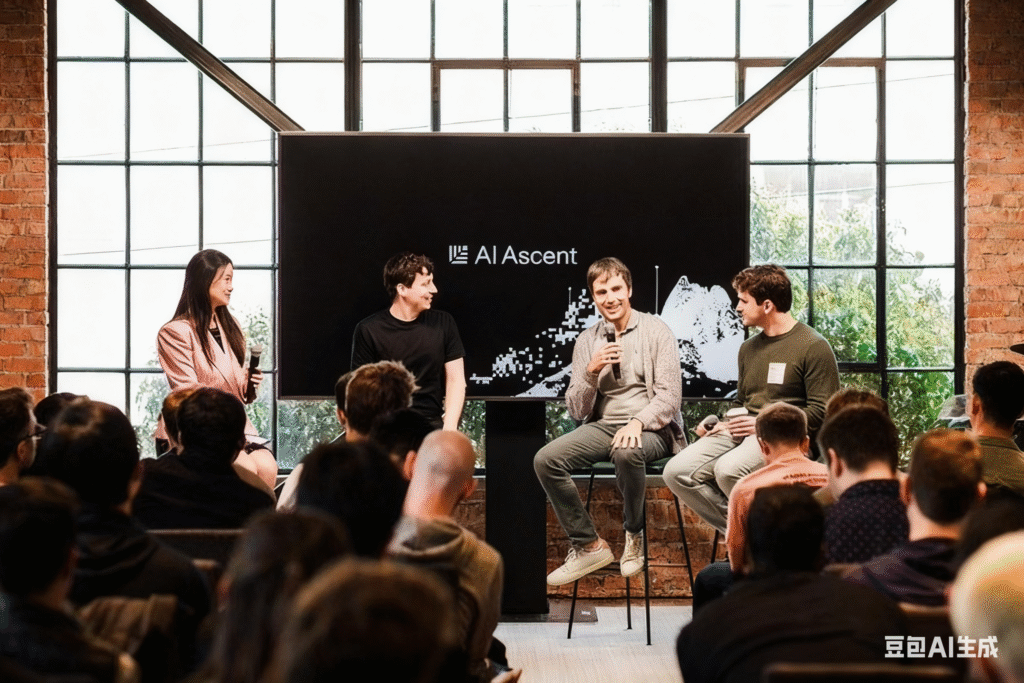Investor Deep Dive: Jun Li
Over the past six months, a clear theme has emerged across industry gatherings—from closed-door discussions at Sequoia Capital to large-scale public events such as SaaStr 2025 in San Francisco: AI Orchestration. More than just a buzzword, it signals a paradigm shift in how enterprises build, integrate, and scale AI within their operations.
AI Orchestration represents the connective tissue between discrete AI functions. If agents can communicate and collaborate in real time, enterprises may soon gain what amounts to a seasoned AI operations leader embedded in their workflows.
1. From MCP and A2A to Business Orchestration
The rise of orchestration builds on early discussions around Model Context Protocols (MCP) and Agent-to-Agent communication (A2A). These frameworks enabled large language model providers and AI agent startups to collaborate through shared protocols.
Business orchestration takes this one step further: embedding AI agents directly into daily enterprise workflows—not just isolated tasks—elevating collaboration to a new level. It shifts the narrative from “a coding tool here, a marketing tool there” to an ecosystem where agents can adapt, communicate, and coordinate across departments like an experienced COO.
2. Transforming Enterprise Workflows with AI
The enterprise AI journey has unfolded in distinct phases:
- Copilots (Task Assistants):
Tools like Cursor and Windsurf are redefining software development. In customer support, copilots now handle common inquiries and triage service requests. - Single-Function Agents (Efficiency Tools):
Agents can now auto-generate presentations, marketing videos, and internal reports. - Supplier-Replacement Agents:
Specialized agents are increasingly capable of high-touch tasks such as legal review or customer success management, reducing reliance on external vendors. - Multi-Agent Governance Models (Future Vision):
Envision “super-agents” or committees of agents capable of supervising, analyzing, and making dynamic cross-department decisions—replacing today’s static SaaS stacks with adaptive AI operations.
The companies that succeed will be those able to build robust safeguards, validation layers, and governance structures into these orchestration systems.
3. The Moat for Enterprise AI Agents: Accuracy, Governance, Trust, and Efficiency
While excitement is high, risks loom large. AI hallucinations are not just technical flaws—in enterprise environments, inaccurate outputs can lead to legal liability, security breaches, or brand damage, especially in regulated industries like finance, law, and healthcare.
This makes trust the decisive factor in AI adoption:
- Can systems securely access the right data?
- Can they reliably retain context across sessions?
- Can they deliver consistent, defensible results?
Efficiency also matters. Seamless, cost-effective interoperability with other MCPs and agents will directly impact margins and profitability. Without it, the advantages of AI orchestration risk being eroded by operational costs.
4. Memory and Organizational Intelligence
Another frontier is organizational memory systems. Just as LLMs use context windows and retrieval-augmented generation (RAG) to mimic memory, enterprises will need persistent memory frameworks to answer questions such as:
- What has the organization learned?
- What decisions were made—and why?
- How should these decisions inform future actions?
This will drive continuous organizational learning, not just through model retraining but through decision optimization.
5. The Shift to “Pay-for-Results” Agents
Enterprise AI business models are evolving:
- From subscription SaaS,
- To usage-based billing (“pay as you go”),
- And now toward “pay-for-results.”
But measuring results is complex:
- In IT ticketing, success can be measured in resolution times or cost per ticket.
- In legal AI, KPIs might include contract accuracy or reduced negotiation cycles.
- In onboarding new enterprise clients, attribution is fuzzier—KPIs are harder to define.
As Klarna’s CEO noted when replacing an entire department with AI agents, outcomes such as headcount reduction or faster decision-making require careful frameworks and trusted metrics.
6. Leapfrogging with AI-Native Orchestration
Interestingly, organizations lacking traditional IT infrastructure may adopt AI-native operating models more quickly. Much like how some Southeast Asian economies skipped the PC era and embraced mobile-first growth, these companies may bypass the SaaS stack altogether—jumping straight into orchestration systems.
This provides a strategic advantage: the freedom to adopt the new paradigm without the burden of legacy systems.
7. From Services to Productized AI Agents
Historically, product companies commanded higher valuations than service firms. In the AI era, however, the line is blurring. Services powered by AI agents can now scale like products: low marginal cost, repeatable delivery, and increasing automation.
As a result, technology valuation models may be redefined. “Service-like products” could become the new norm as agent automation reshapes what scalability means.
Conclusion: From Tools to Intelligent Systems
AI Orchestration is not merely about connecting tools—it’s about restructuring how work gets done. The winners of the next wave will not only build powerful models but also create intelligent systems that understand context, build trust, retain memory, and deliver measurable results.
The enterprise of the future will not be powered by applications.
It will be powered by agents.


